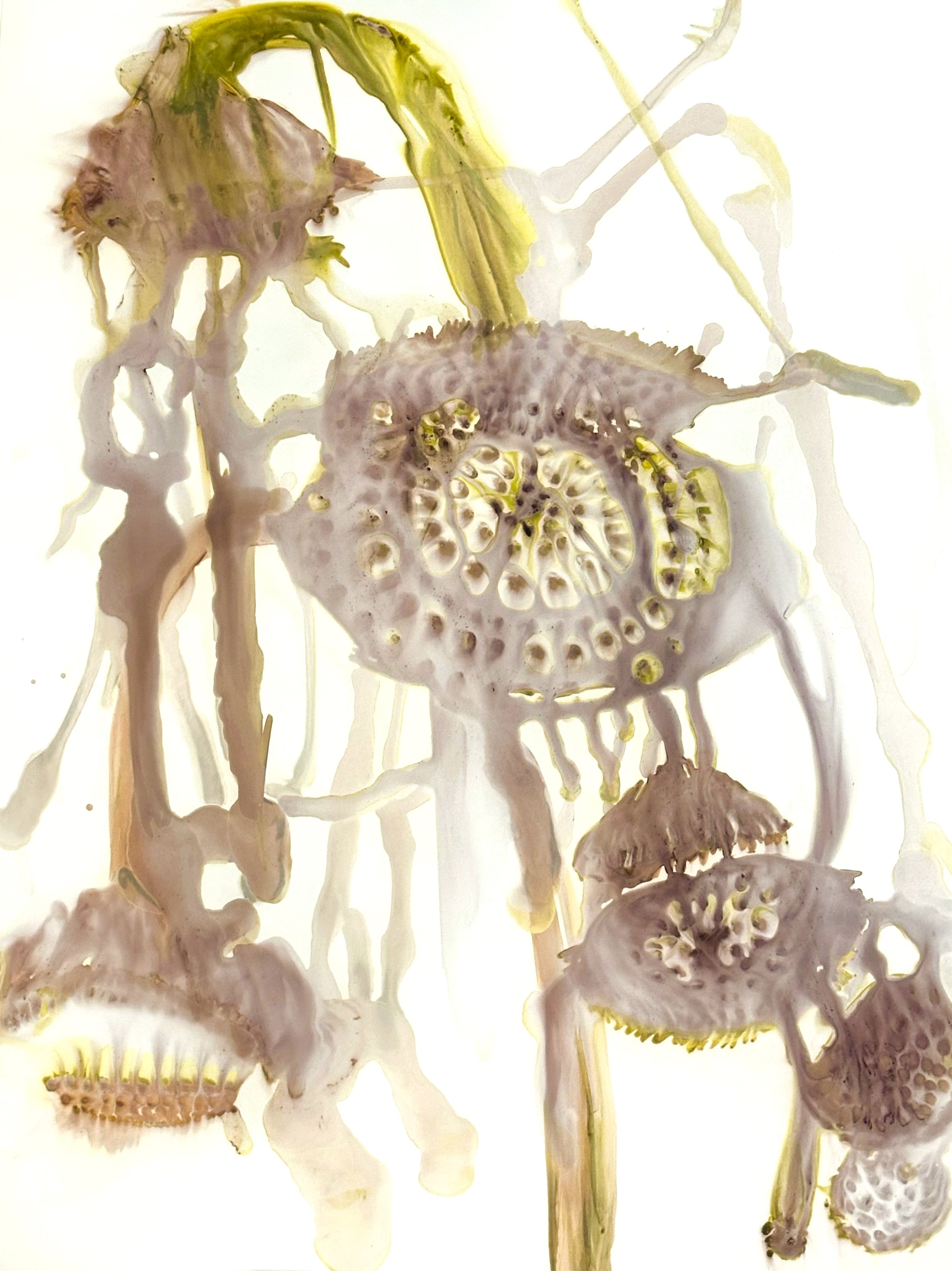Jeffrey Kenney
Weathered Sunflowers (series of 4), 2020
pigment-based ink, unfixed black textile dye, and water on Epson glossy inkjet paper,
exposed to the sun for varying durations
22”x30” each
Sunlight is both a life-giving source of energy and destructive environmental force. Photodegradation is the alteration, fading, or breakdown of materials caused by the absorption of light energy, especially sunlight. This process is normally thought of as damaging to materials such as plastics or the colors of dyes and paints but can also be used for environmentally friendly degradation of pollutants and material waste.
The four gestural images from the Weathered Sunflowers series were painted directly on paper designed for inkjet printing using a mixture of yellow pigmented ink, black dye, and water. Directly after painting, the black colors were vivid and full of contrast. The paintings were then left in direct sunlight for a period of days, allowing the dyes to oxidize and fade in the UV radiation causing the once black tones to shift to reds and purples. They will continue to change and decay as their materials interact with the environment.
The depiction of sunflowers has a long lineage in art history and has been used for many metaphorical purposes including as signs of resilience, the cyclical nature of the seasons, longevity, and happiness. When depicted going to seed, wilting, or decaying, they are often associated with the pending melancholy of autumn and winter, death, or the “dying of the light.”




